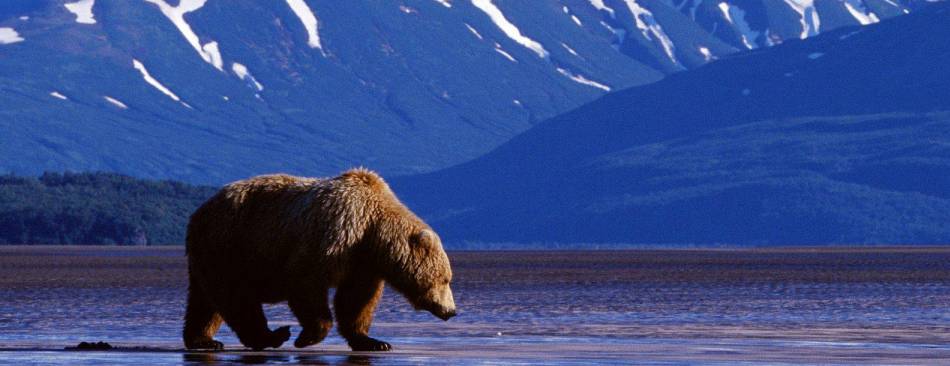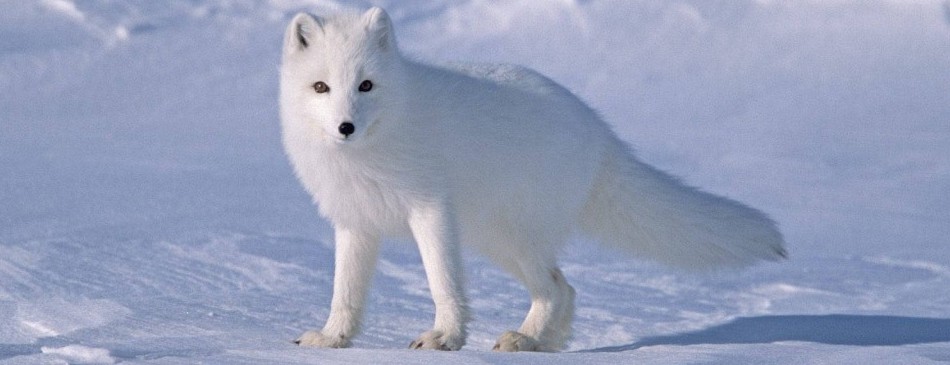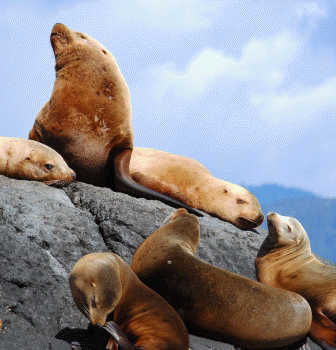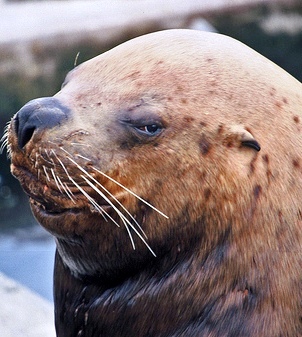The Steller (or northern) sea lion (Eumetopias jubatus) is the largest member of the family Otariidae, the “eared seals,” which includes all sea lions and fur seals. It is the only member of genus Eumetopias. Otariids differ from phocids, the “true seals,” in having external ear flaps, long forearms resembling flippers used for propulsion, and rotatable hind flippers that allow quadrupedal locomotion on land.
At birth, pups have dense, coarse, nearly black fur with a frosty appearance because the tips of the hair are colorless. Color lightens after their first molt in late summer. Most adult females are buff colored on the back. Nearly all males stay darker on the front of the neck and chest; some are even a reddish color. Adult males have prominent, broad foreheads and muscular necks. The sound of a Steller sea lion haulout is a chorus of low-pitched “roars” of older individuals mixed with the “lamb-like” vocalizations of young pups. California sea lions may often be heard among Steller sea lions in southeastern Alaska haulouts; their “barking” sounds are a distinctive cue to look for these smaller, darker sea lions.
Scientists use kitchen spoons to scrape sea lion scat off rocky haulouts throughout Alaska and Canada. This scat is examined for the presence of “hard parts,” such as fish bones or squid beaks, that can be keyed to prey species eaten by sea lions. Recently, scientists are also attempting to identify the chemical signatures of prey items in the blood and blubber of sea lions. From this work we know that Steller sea lions are generalist marine predators with a diet of fishes and cephalopods that tends to be predictable by season and region, with the occasional meal of bird or true seal for variety. Some prey are generally available year-round, such as walleye Pollock, Atka mackerel, arrowtooth flounder and cephalopods, while others are targeted by sea lions when they become seasonally abundant, such as Pacific herring, Pacific salmon, Pacific cod, eulachon and capelin. Western Alaska diets are dominated by Atka mackerel and walleye pollock and eastern diets feature walleye pollock, Pacific cod, flatfish, rockfish and forage fish. Sea lions can consume prey whole while underwater.
Sea lions do not migrate, but do move their “central-place haulout,” the center of their foraging activity, to track seasonal concentrations of their many types of prey. They breed on exposed, offshore rookeries during summer and generally move to more protected haulouts in winter, especially in southeastern Alaska. Very young sea lions can swim 75 miles (120 km) non-stop between haulouts. Some sea lions make long-distance movements over long periods of time. The longest recorded movements are Forrester Island to Cape Newenham (1,600 miles / 2,500 km), Kozlof Cape, Russia to Round Island (1,400 miles / 2,300 km) and Medny Island, Russia to Round Island (1,200 miles / 2,000 km).
Steller sea lions use rookeries and haulouts on land to rest and suckle their young. Adult females must continue foraging while nursing their pups, and the pups’ bodies are well-adapted to fast while females are hunting prey during 1-2 day trips. By their first spring, pups are able to reach similar diving depths as adults but do not do so as frequently. As pups grow older, their swimming and diving patterns grow to resemble that of older sea lions.
Foraging trips are usually within a few tens of miles off haulouts, but the longest recorded continuous foraging trip was 550 miles (900 km) into the Bering Sea. Older juvenile sea lions can dive to at least 1500 feet (500 meters) and stay underwater for over 16 minutes. When swimming, Steller sea lions use their front flippers for propulsion and their back flippers to steer. When moving on land, they use a “rolling walk” on all four flippers by pulling their hind flippers under their body. Steller sea lions are capable climbers, often found high above the water on cliff faces.
Males may live up to 20 years and females to 30 years. Males reach sexual maturity at 3-7 years but do not hold territories on breeding rookeries until 9-13 years. Females start breeding at 3-7 years and spend the next two decades either pregnant or lactating. Females are bred in June, but the fertilized egg does not implant until October. Single pups are born the following June, with birthdates at southern rookeries earlier than births at northern rookeries. Twins are rare. Pups suckle from 1 to 3 years, with most apparently weaning after their first winter.
Steller sea lions inhabit over 300 haulouts and rookeries along the North Pacific rim from Hokkaido, Japan, north along the Kuril Islands into Kamchatka and the Sea of Okhotsk, east along the Aleutian chain and into the central Bering Sea, through the Gulf of Alaska, south through southeastern Alaska, the Canadian Pacific coast and to the Channel Islands off California. Steller sea lion females exhibit high site fidelity, generally using the same rookeries to breed and birth their pups each year. These sites are usually on remote islands where access by predators is limited.
|








